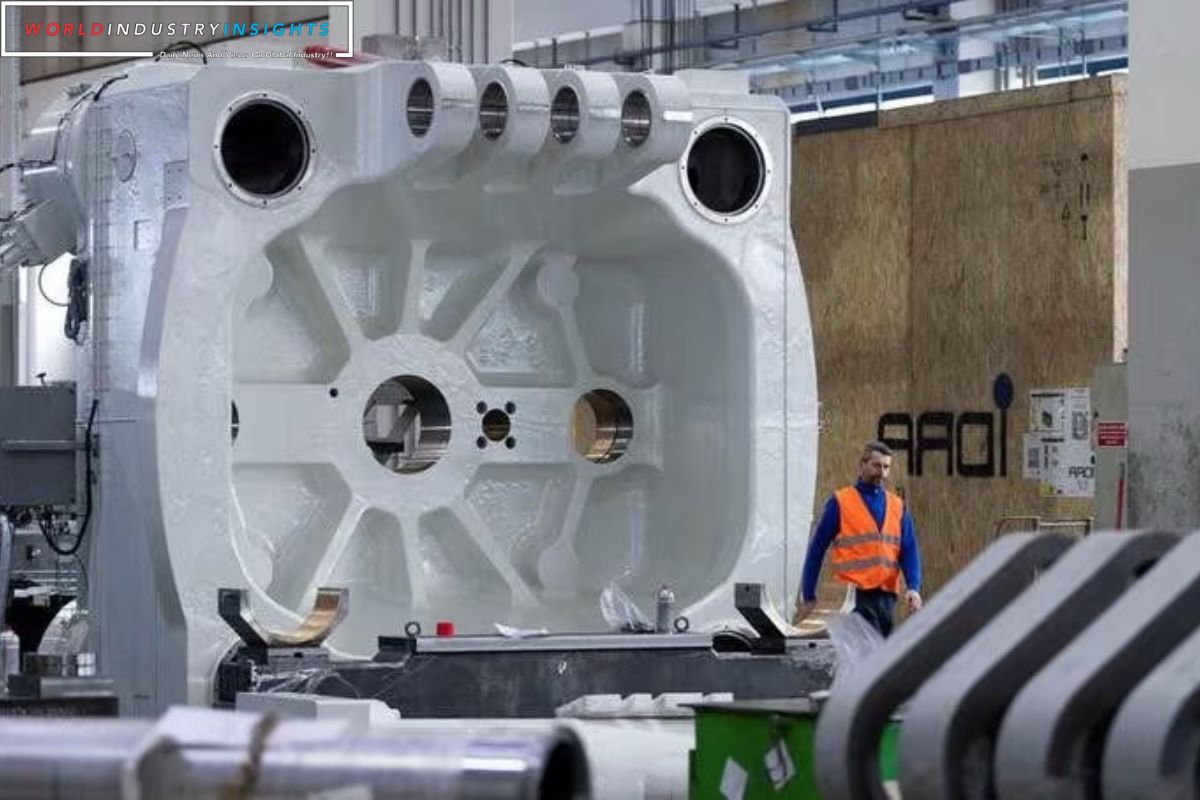GM’s Stealth Move Acquiring Tesla: In a strategic move that largely slipped under the radar until 2023, General Motors (GM) acquired Tooling & Equipment International (TEI), a company instrumental in advancing Tesla’s gigacasting process. Gigacasting involves casting large vehicle parts in one piece, optimizing efficiency and cost-effectiveness. By securing expertise in sand casting from TEI, GM aims to accelerate its own efforts to produce cars more affordably, just as Tesla races to introduce a $25,000 electric vehicle (EV).
With TEI now under GM’s umbrella, Tesla finds itself relying more on other casting specialists in the UK, Germany, and Japan for the development of molds crucial to producing millions of economical EVs in the next decade. Simultaneously, Tesla is actively seeking another sand casting specialist to fill the void left by TEI or considering in-house development to reduce dependence on external suppliers.
GM defended the acquisition, stating it aimed to enhance its innovation portfolio and gain access to unique casting technology. Neither Tesla nor TEI President Oliver Johnson responded to requests for comment.
This maneuver reflects a broader trend among automakers, including Ford, Hyundai, and Toyota, attempting to replicate Tesla’s gigacasting prowess to match its design and manufacturing efficiency and remain competitive in the EV market.
Gigacasting lies at the core of Tesla’s “unboxed” manufacturing strategy, introduced by CEO Elon Musk in March. This strategy focuses on producing a car’s structural platform and subframes in one piece, streamlining assembly and significantly reducing costs. The success of this approach is attributed, in part, to TEI and three other suppliers working closely with Tesla. These suppliers play a pivotal role in using sand casting for rapid prototyping, enabling swift and cost-effective validation of Tesla’s designs and engineering specifications for large molds.
TEI began collaborating with Tesla around 2017, contributing to the development of the Model Y and establishing itself as a leading sand casting specialist globally. The company’s involvement extended to gigacasting mold prototyping for Tesla’s Model 3, Cybertruck, and heavy-duty Semi truck.
When TEI was put up for sale in the previous year, GM likely anticipated gaining valuable gigacasting knowledge. The realization likely occurred during due diligence, with prior collaboration taking place around 2021 when TEI tested and produced underbody castings for GM’s luxury Cadillac Celestiq EV.
As part of the Celestiq program, GM secured a long-term contract with TEI, which invested in a dedicated production line for Celestiq castings at its Livonia facility, conveniently located near GM’s Detroit headquarters. GM emphasized the competitive advantage gained through TEI’s expertise, especially for low-volume products like the Cadillac Celestiq.
TEI, having won the 2023 Casting of the Year award from the American Foundry Society for Celestiq castings, officially became part of GM’s Global Manufacturing division on July 1. While GM paid less than $100 million for TEI, Tesla’s involvement in the bidding process remains uncertain.
This strategic acquisition provides GM with a unique opportunity to witness firsthand how Tesla refined its gigacasting expertise. The collaboration involves creating test molds using industrial sand and 3D printers known as binder jets to build sand molds capable of casting molten alloys. This method’s key advantages include rapid printing of sand molds, allowing for multiple iterations at minimal cost to fine-tune and adjust mold designs.
TEI and other specialists have played a crucial role for Tesla, not only in developing new alloys for sand casts but also in perfecting techniques for heat-treating large metal body parts post-molding to enhance their quality.
James Womack, a former research director at the Massachusetts Institute of Technology, views Tesla’s manufacturing innovations as a wake-up call for the legacy auto industry, shaking up established norms. He notes that even Toyota, renowned for manufacturing efficiency, has embraced gigacasting and other Tesla-inspired innovations. Womack emphasizes that the competition for greater efficiency is ongoing, acknowledging that cutting-edge endeavors often take more time than initially projected, and some experiments may fail.
Also read: GM Electric Roadmap: Bolt and Premium EVs for Chevrolet and Cadillac
Our Reader’s Queries
How much did GM pay for TEI?
According to insiders familiar with the matter, GM reportedly shelled out less than $100 million to acquire TEI. It remains unclear if Tesla was also in the running to acquire the company.
What company did GM buy?
In an email, GM stated that it acquired TEI to expand its range of innovations and gain exclusive access to advanced casting technology. Meanwhile, Toyota showcased a prototype of its latest gigacasting equipment at a manufacturing facility in Japan last September.
Who sells more EVs Ford or GM?
In the U.S., Ford outperformed GM in electric vehicle deliveries by over 50% in the previous year. However, GM has taken a significant lead in 2023, with the potential for exponential growth in EV sales. This is due to the launch of new models based on its Ultium platform, which are set to hit the market soon.
What is a Gigacasting?
Gigacasting has become a popular trend in the automotive manufacturing industry. Tesla has played a significant role in popularizing this term, which involves the use of massive, high-pressure aluminum die casting machines to produce vehicle chassis and bodies-in-white. However, this technology has gained more traction in mainland China.


